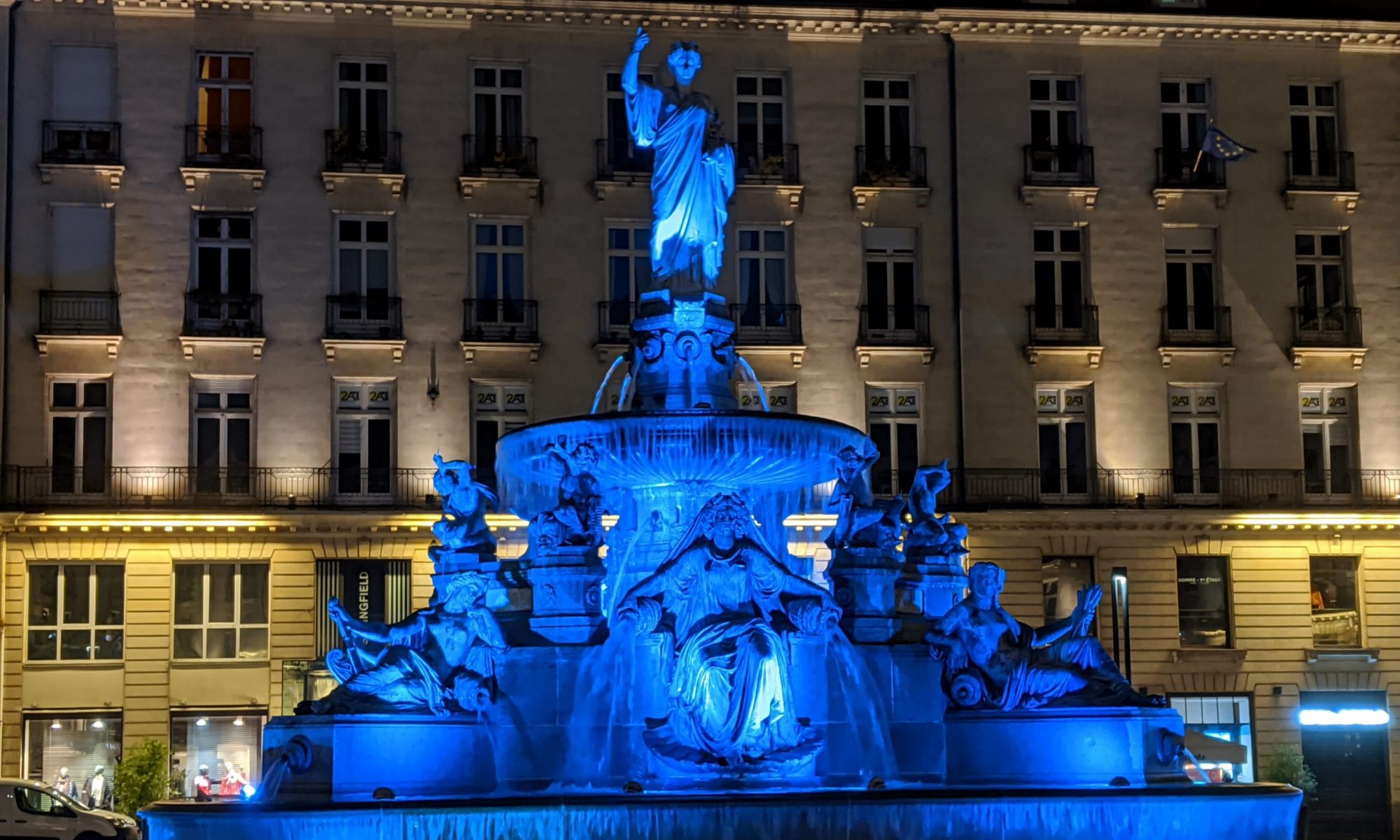The festival doesn’t begin until July 7, so for the few days before that we spent some time in the areas surrounding Avignon. Monday I went on commercial a tour of a couple of Châteuneuf du Pape wineries and the ruins of the château itself. Ruth arrived late Monday night, and after a travel recovery day for her we rented a car. Wednesday morning and mid-day we spent biking in Camargue regional park before meeting up with friends in Arles in the afternoon. Thursday we went on a canoeing trip down the Gardon river from Collias to Pont du Gard.
Châteauneuf du Pape
My tour left in the afternoon from the Office du Tourisme. The guide from À la Francaise navigated the difficulty of 3 clients taking their own car and then loaded the other 4 of us into a minivan and headed out to wine country. We were 6 Americains and one young man from Hong Kong. I was the only French speaker among the bunch, so mostly the guides spoke English, with occasional side conversations with me. Our first stop was Château Fortia, a smaller winery with an interesting family history. Baron Le Roy, the grandfather of the current owner, was one of the creators of the AOP system (Appellation d’Origine Contrôlée) which lets winemakers qualify to label their wines as coming from a particular region if they follow certain quality assurance or tradition adherence measures. We got a tour and then a tasting led by the current winemaker, who appeared to be in his late 60s.
Second stop was Bouachon winery. More extended and showy tasting, entertaining sommelier.
Final stop ruins of Châteauneuf du Pape. Destroyed in WWII when a British bomber in distress emptied its bomb bay to be more nimble in evading a German fighter plane. Bombs accidentally landed on the Château. Sadness.
Funny story: le reliquat
Camargue
Rented a car, drove to Sainte Marie-de-la-mer. Once there, rented bikes (reserved the previous day) and rode along the dike in Camargue. The bikes had electrical assist, so the 22km ride was easy on the legs. Harder was the sandy paths in parts, which required some walking and engendered one spill.
It was hot. Hot, hot, hot. But the biking generated a breeze, and we were right by the sea so got more breeze. Saw less wildlife than hoped for: a number of seabirds and one stand of flamingos. Plenty of tourists on horses. No wild white horses, no bulls. Ah well. Had a picnic lunch (which we packed) at a lighthouse, then turned around.
Arles
Drove to Arles, parked the car just outside the music store that Ruth is renting a keyboard from. Ruth is participating next week in a few workshops organized by the « Les Suds, à Arles festival ». Walked to Place dur Forum and met Nora and family there. Had a drink, talked in French a lot.
Pont du Gard
Thursday morning drove out to Collias in the department of Gard. Rented a canoe from Kayak Vert, put in at their offices in Collias. Shallow but somewhat fast river Gardon (called Gardon or Gard depending how big it at that point). Lots of wind, tricky to keep canoe straight. Sunny but not too hot. Lots of other canoers. Here we saw a white horse walk across the river at some point, with a donkey following it 30 yards behind. Paddled under the bridge — ancient Roman construction, big and in impressive. Saw lots of tourists walking across it, but contented ourselves with floating under it. Continued on for another while to the take out point. All told 8km of canoeing, maybe 3 hours. Company staff collected lots of boats and lots of patrons in a bus + 3 vans.
Drove to Uzès nearby. Supposed to be a quaint village with interesting center. Ate a yummy lunch at a café, but didn’t have much energy to walk around afterwards. Drove home in the afternoon in order return car and get ready for Thursday night performance.

























